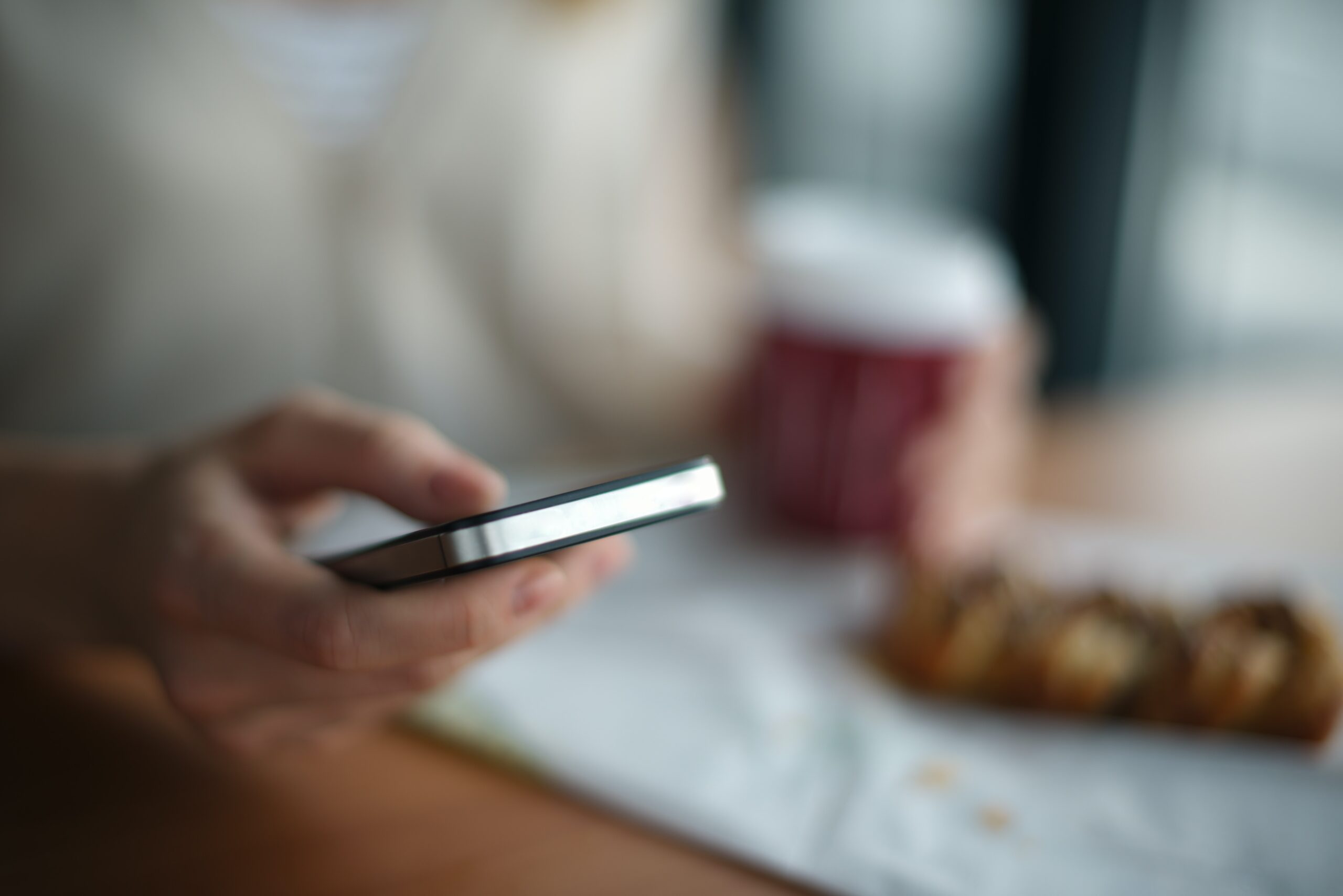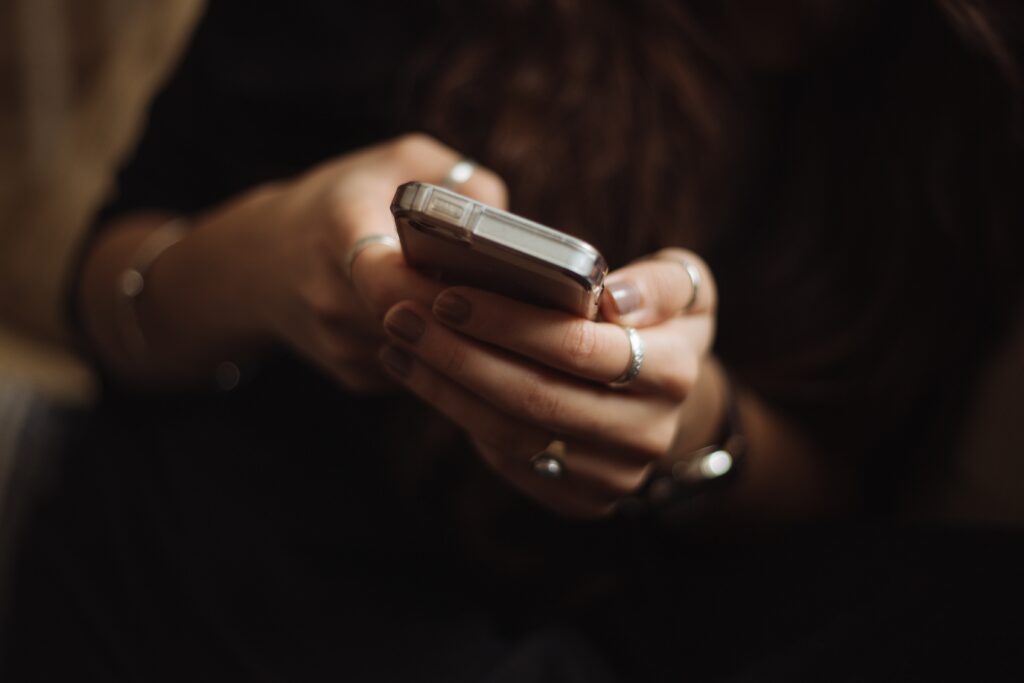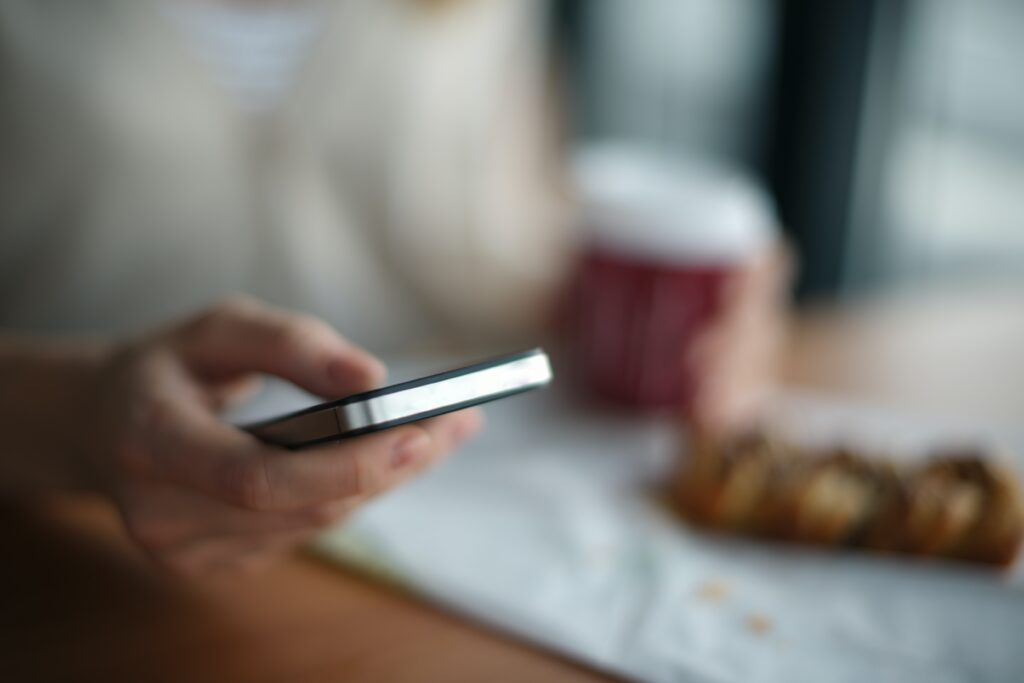
So, you’ve just had an amazing time on a date and now you’re left wondering – how soon should you text or call the other person? It’s a question that has caused countless moments of anxiety and uncertainty. Well, fret not! With the help of our product, “How Soon Should I Text Or Call After The Date?”, you can finally put those doubts to rest. This innovative guide provides valuable insights and proven strategies to navigate the post-date communication dilemma, ensuring that you make a positive impression without coming across as too eager or disinterested. Say goodbye to the guessing game and hello to a more confident dating experience.
Learn How to Get Ready For your Date Right Here!
The importance of timely communication
Setting the tone for future communication
After a great date, it’s crucial to maintain the momentum and set the tone for future communication. Timely communication shows that you are interested and excited to continue getting to know the person. It creates a sense of anticipation and keeps the connection alive. By reaching out promptly, you demonstrate that their time and presence meant something to you.
Showing interest and enthusiasm
Promptly reaching out after a date is an excellent opportunity to show your interest and enthusiasm. By conveying your excitement about the date and your desire to continue getting to know the person, you create a positive impression. It lets them know that their company was enjoyable and that you genuinely want to explore the connection further. A timely and enthusiastic message can leave a lasting impression and set the stage for future interactions.
Avoiding misunderstandings
Timely communication is key in avoiding misunderstandings. When you reach out promptly after a date, it reduces the chances of misinterpretation or confusion. By addressing any questions or concerns that may have arisen during the date, you show that you are proactive in clarifying any potential misunderstandings. Clear and timely communication helps ensure that both parties are on the same page, alleviating any doubts or uncertainties.
Keeping the momentum of the date
By contacting your date in a timely manner, you keep the momentum of the date alive. The emotions and connections established during the date are still fresh, allowing for a seamless continuation of the conversation. Delaying communication might create a sense of disinterest or make the other person question the chemistry that was felt on the date. Keeping the momentum going demonstrates that you are genuinely interested in exploring the connection further.
Factors to consider before reaching out
Type of date and connection
Before reaching out, it’s important to consider the type of date and the connection you established. Was it a casual outing or a more formal dinner? Understanding the context of the date can help guide your communication approach. Additionally, assessing the depth and quality of the connection you felt is crucial in determining the right timing. If the chemistry was strong and the connection felt genuine, reaching out sooner rather than later might be more appropriate.
Perceived interest and chemistry
Consider how interested and engaged the other person appeared during the date. Did they seem genuinely interested in you and the conversation? Assessing their level of interest and chemistry can provide valuable insight into their expectations for post-date communication. If there was a clear mutual interest and connection, reaching out within a reasonable time frame can help maintain the positive momentum.
Personal availability and scheduling
Before contacting your date, assess your own personal availability and scheduling. It’s essential to find a balance between reaching out in a timely manner and giving each other enough space. Consider your own responsibilities and commitments, as well as the potential availability of your date. Taking these factors into account can help ensure that your communication doesn’t feel overwhelming or intrusive.
Cultural and societal norms
Cultural and societal norms can also influence the timing of post-date communication. Different cultures may have varying expectations regarding the appropriate timeframe for reaching out. It’s important to be aware of these norms and adjust your approach accordingly. While it’s crucial to be authentic and true to yourself, being mindful of cultural and societal considerations can help you navigate the post-date communication landscape with respect and sensitivity.

Learn How to Get Ready For your Date Right Here!
Texting vs. calling
Pros and cons of texting
Texting has become the primary mode of communication in our digital age, and it offers several advantages. It’s quick, convenient, and allows for asynchronous communication, meaning you can respond at your own pace. Texting also provides an opportunity to craft thoughtful messages and allows for more time to consider your words carefully. It can be less intimidating than a phone call, especially in the early stages of getting to know someone.
However, there are also limitations to texting. Tone and intent can be easily misinterpreted through text, leading to misunderstandings. It can lack the personal touch of a voice or face-to-face conversation, potentially distancing you from the other person. Additionally, excessive texting can also create a sense of dependence or neediness, which may not be conducive to building a healthy and balanced connection.
Pros and cons of calling
Calling, on the other hand, offers a more direct and personal form of communication. It allows for real-time interaction and the opportunity to hear each other’s tone of voice and expressions. A phone call can help build a deeper connection and allows for a more nuanced conversation. It can also be a great way to show interest and enthusiasm.
However, calling can also be perceived as more intrusive or demanding, especially if the other person is not expecting or comfortable with it. It requires both parties to be available and focused on the conversation, which may not always be feasible. Furthermore, initiating a phone call too soon after a date can potentially feel overwhelming and put unnecessary pressure on the other person.
Considering personal preferences
When deciding between texting and calling, it’s important to consider personal preferences. If you know that you or your date strongly prefer one form of communication over the other, it’s best to respect those preferences. Some people may feel more comfortable and connected through texting, while others may prefer the intimacy and immediate response of a phone call. By aligning your preferred method of communication with theirs, you can create a more harmonious and enjoyable interaction.
Reading the situation
Ultimately, reading the situation and adapting to the dynamic between you and your date is key. Pay attention to the nature of your conversations, the way you connected during the date, and any cues they may have given regarding their communication preferences. By being attuned to these signals, you can make an informed decision about whether texting or calling would be more appropriate for your specific situation.
The 24-48 hours rule
Why wait?
The “24-48 hours rule” is a guideline that suggests waiting for a day or two before reaching out after a date. This brief waiting period allows both parties to reflect on the date, process their feelings, and avoid appearing too eager or desperate. It provides a natural hiatus, which can help build anticipation and curiosity. Waiting also demonstrates that you have a busy and fulfilling life outside of dating, adding an element of mystery and intrigue.
Exceptions to the rule
While the 24-48 hours rule can be beneficial in many cases, there are exceptions to consider. If you and your date had an exceptional connection and expressed a strong interest in each other, it may be appropriate to reach out sooner. Trust your instincts and assess the unique circumstances of your date. However, it’s crucial to strike a balance between showing your interest and giving the other person space to process their own thoughts and feelings.
Determining the right timing
Determining the right timing to reach out is often a matter of intuition and consideration. It’s essential to be aware of the energy and flow of the date and gauge whether a quicker or more delayed approach would align better with the connection you established. If you’re uncertain about the right timing, erring on the side of slightly waiting can help you maintain a respectful and balanced approach.

Crafting the perfect message
Choosing the right words
When crafting a message after a date, choosing the right words is crucial. Be thoughtful and considerate in your message, while also remaining authentic and genuine. Show appreciation for the time you spent together and mention something specific that you enjoyed or found interesting during the date. Compliments can go a long way in making the other person feel special and valued.
Being authentic and genuine
Authenticity and genuineness are key when crafting a message. Avoid using generic or impersonal messages that could easily be copied and pasted to multiple people. Instead, focus on individual aspects or moments from the date that stood out to you. By being authentic in your message, you show that you are truly interested and invested in the person you went on a date with.
Keeping it light and positive
After a date, it’s best to keep the message light and positive. Avoid delving into heavy or intense topics too soon. Instead, focus on creating a pleasant and enjoyable conversation. Use humor, if appropriate, to lighten the mood and create a sense of camaraderie. This will help keep the conversation flowing and establish a positive foundation for future interactions.
Ending with a call to action
To keep the conversation moving forward, it’s helpful to end your message with a call to action. This can be as simple as suggesting a specific activity or asking an open-ended question to encourage further conversation. By giving the other person something to respond to, you increase the likelihood of continued engagement and facilitate the planning of the next date.
Red flags in post-date communication
Excessive or desperate messaging
One red flag in post-date communication is excessive or desperate messaging. Bombarding the other person with numerous messages or coming across as overly eager can be off-putting. It’s important to be mindful of the balance between showing your interest and maintaining a sense of restraint. Respect the other person’s time and boundaries by allowing them the space to respond at their own pace.
Lack of response or interest
Another red flag is a lack of response or apparent disinterest. If the other person consistently takes a long time to reply or engages in minimal conversation, it may be a sign that they are not as interested as you had hoped. While it’s important to give them the benefit of the doubt and consider external factors, it’s also crucial to recognize when it may be time to reassess your expectations or move on.
Inconsistent or mixed signals
Inconsistent or mixed signals can also be a red flag in post-date communication. If the other person’s words and actions do not align, it can create confusion and uncertainty. Pay attention to inconsistencies or sudden changes in their behavior. While it’s essential to communicate openly and seek clarity, it’s also important to trust your instincts and be cautious if red flags continue to persist.
Overanalyzing the communication
Overanalyzing every aspect of post-date communication can also be detrimental. While it’s natural to feel some level of anticipation and curiosity, obsessing over every word or response can lead to unnecessary stress and anxiety. Remember that communication styles and preferences vary, and it’s essential to give each other the benefit of the doubt. Focus on building a genuine connection rather than nitpicking every message.

Navigating the aftermath
Managing expectations
Navigating the aftermath of a date requires managing expectations. It’s important to remember that not all connections will progress at the same pace or lead to a long-term relationship. Be open to the possibility of different outcomes and avoid placing unrealistic expectations on the situation. Appreciate the experience and the opportunity to connect with another person, regardless of the ultimate outcome.
Giving space and respecting boundaries
Giving each other space and respecting boundaries is crucial in post-date communication. Recognize that everyone has their own pace and comfort level when it comes to getting to know someone. If the other person needs time between conversations or expresses a desire for more space, respect their wishes. Remember that healthy communication involves finding a balance between showing interest and respecting each other’s individual needs.
Continuing the conversation
Continuing the conversation after the initial post-date message is vital to nurturing the connection. Keep the dialogue flowing by asking open-ended questions and actively listening to their responses. Take a genuine interest in getting to know them and find common topics to explore. By maintaining a steady stream of conversation, you increase the chances of deepening the connection and building a solid foundation for future interactions.
Planning the next date
If the conversation is going well and there is mutual interest, planning the next date is an exciting next step. Take the lead in suggesting specific activities or locations that align with both of your interests. Be open to their suggestions and preferences as well, as this fosters a sense of collaboration and partnership. By proactively planning the next date, you demonstrate your commitment to furthering the connection.
Guidelines for long-distance dating
Adjusting for time zones
Long-distance dating presents unique challenges, one of which is adjusting for time zones. It’s important to be mindful of the time difference and considerate of each other’s schedules. Find overlapping time periods where both of you can be fully present and engaged in the conversation. Keeping track of each other’s time zones and making the necessary adjustments shows dedication and effort in maintaining the connection.
Utilizing technology
Fortunately, technology offers a myriad of tools to facilitate long-distance dating. Utilize video calls, messaging apps, and social media platforms to connect and stay in touch. Video calls can provide a more intimate and personal connection, allowing you to see each other’s facial expressions and body language. Messaging apps and social media can help bridge the distance by providing a constant line of communication.
Balancing frequency and intensity
When engaging in long-distance dating, it’s important to strike a balance between frequency and intensity. Find a rhythm that works for both of you, taking into account your personal schedules and availability. While it’s important to maintain regular communication, pacing it appropriately can help prevent overwhelming or burning out the connection. Be mindful of each other’s needs and find a comfortable flow.
Creating opportunities for in-person meetings
Long-distance dating should ultimately lead to in-person meetings whenever possible. Plan and coordinate visits to each other’s locations, exploring new places and creating lasting memories. While the distance may make it more challenging, the anticipation and excitement of seeing each other in person can strengthen the connection and make the effort worth it.

Recovering from a misstep
Apologizing if necessary
If you believe you have made a misstep in your post-date communication, it’s important to apologize if necessary. Reflect on your actions or words that may have caused misunderstanding or discomfort. Apologizing shows humility, self-awareness, and a genuine desire to make amends. Be sincere in your apology and express your commitment to learning and improving from the experience.
Addressing misunderstandings
Misunderstandings can happen in any form of communication, and it’s crucial to address them head-on. If there is confusion or a difference in perception, openly discuss the issue and seek clarification. Effective communication involves active listening, empathy, and a willingness to understand each other’s perspectives. By addressing misunderstandings in a considerate and respectful manner, you can foster a stronger connection based on trust and understanding.
Learning from the experience
Every misstep or mistake is an opportunity for growth and learning. Reflect on the experience and identify the lessons it has taught you. Take responsibility for your actions and consider how you can improve your communication skills and approach in the future. Learning from the experience will not only benefit your current connection but also your relationships in the long run.
Moving forward with caution
Moving forward after a misstep requires caution and self-awareness. Be attentive to how the other person responds and reacts to your efforts to make amends. They may need time or space to process their emotions or evaluate their own feelings. Take their cues into consideration and proceed at a pace that feels comfortable for both of you. Building trust and repairing the connection takes time and patience.
Conclusion
In the world of dating, timely communication plays a crucial role in establishing and nurturing connections. It sets the tone for future interactions, demonstrates interest and enthusiasm, and helps avoid misunderstandings. Whether you choose to text or call, understanding personal preferences and reading the situation can guide your approach.
The 24-48 hours rule provides a general guideline, but exceptions should be considered based on the connection and individual circumstances. Crafting the perfect message involves choosing the right words, being authentic, keeping it light, and ending with a call to action.
Being aware of red flags in post-date communication, navigating the aftermath, and respecting boundaries are essential. Long-distance dating requires adjustment, utilizing technology, balancing frequency and intensity, and creating in-person meeting opportunities. Recovering from missteps involves apologizing if necessary, addressing misunderstandings, learning from the experience, and moving forward with caution.
In conclusion, finding the right balance, being true to oneself, adapting to each unique situation, and building a foundation of open communication are the keys to successful and fulfilling dating experiences. By following these guidelines and being mindful of the power of timely communication, you can navigate the dating world with confidence and authenticity.




